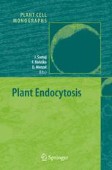Search
Search Results
-
Cytological, Physiological and Biochemical Aspectsof Somatic Embryo Formation in Flax
The cytological, physiological and some biochemical aspects of somatic embryo formation in flax are discussed. From the review it is obvious that...
-
Tip Growth and Endocytosis in Fungi
Recent advances in molecular cell biology have provided new insights into different cellular processes that all turn out to contribute to...
-
Auxin Transport and Recycling of PIN Proteins in Plants
Polar transport of the phytohormone auxin is mediated by plasma-membrane and endosome localized carrier proteins. PIN proteins are the best...
-
Why Somatic Plant Cells Start to form Embryos?
Embryogenesis in plants is not restricted to the fertilized egg cell but can be naturally or artificially induced in many different cell types,...
-
Environmental Design Considerationsfor Somatic Embryogenesis
In addition to the biomolecular, physiological, and biochemical aspects of somatic embryogenesis, careful design of environmental conditions is...
-
Origin, Development and Structure of Somatic Embryosin Selected Bulbous Ornamentals: BAP as Inducer
Somatic embryogenesis in three important ornamentals is discussed in this chapter. Direct somatic embryo development on the explant tissues...
-
MDR/PGP Auxin Transport Proteins and Endocytic Cycling
Auxin is an essential regulator of plant growth and development. Polarized transport of auxin is responsible for apical dominance, tropic growth,...
-
Somatic Embryogenesis in Genera Medicago: an Overview
This chapter outlines the details of somatic embryogenesis in genera Medicago. Various factors that influence the process of somatic embryo...
-
Somatic Embryogenesis of Pine Species: From Functional Genomics to Plantation Forestry
Several economically important tree species belong to the genus Pinus and many of them form the ecological base of forest ecosystems. Pine wood is...
-
Screening and Analysis of Pollen Tube Mutations
Although the cytology of the cellular aspects of male gametophytic development has been very well described for several species, molecular...
-
Senescence and Cell Cycle Control
In response to various stresses, such as telomere shortening during continuous proliferation, oxidative stress, DNA damage and aberrant oncogene...
-
Telomeres in fungi
Telomeres are the functional elements concluding and defining each linear chromosome in eukaryotes. They play an essential role in protecting genetic...
-
The genome of the filamentous fungus Ashbya gossypii: annotation and evolutionary implications
The 9.2 Mb genome of the filamentous fungus Ashbya gossypii consists of seven chromosomes carrying 4718 protein coding genes, 194 tRNA genes, at...
-
Schizosaccharomyces pombe comparative genomics; from sequence to systems
The fission yeast Schizosaccharomyces pombe is becoming increasingly important as a model for the characterization and study of many globally...
-
Chromatin Modifications in DNA Repair
A requirement of nuclear processes that use DNA as a substrate is the manipulation of chromatin in which the DNA is packaged. Chromatin...
-
Quality control of proteins in the mitochondrion
The quality control of proteins within mitochondria is ensured by conserved and ubiquitous ATP-dependent molecular chaperones and proteases, present...
-
The Hsp60 chaperonins from prokaryotes and eukaryotes
The Hsp60 molecular chaperones (the chaperonins) are essential proteins throughout biology. They can be separated into two evolutionary classes: the...
-
Regulation of the heat shock response by heat shock transcription factors
The heat shock response is characterized by a rapid and robust increase in heat shock proteins upon exposure to protein-damaging stresses. This...
-
Template-induced protein misfolding underlying prion diseases
Proteins with prion properties are closely associated to a class of fatal neurodegenerative illnesses in mammals and to the emergence and propagation...
-
Systems Biology: necessary developments and trends
At the end of this definition of Systems Biology through exampling, we discuss ambitions, goals, and challenges relating to this new discipline. We...
